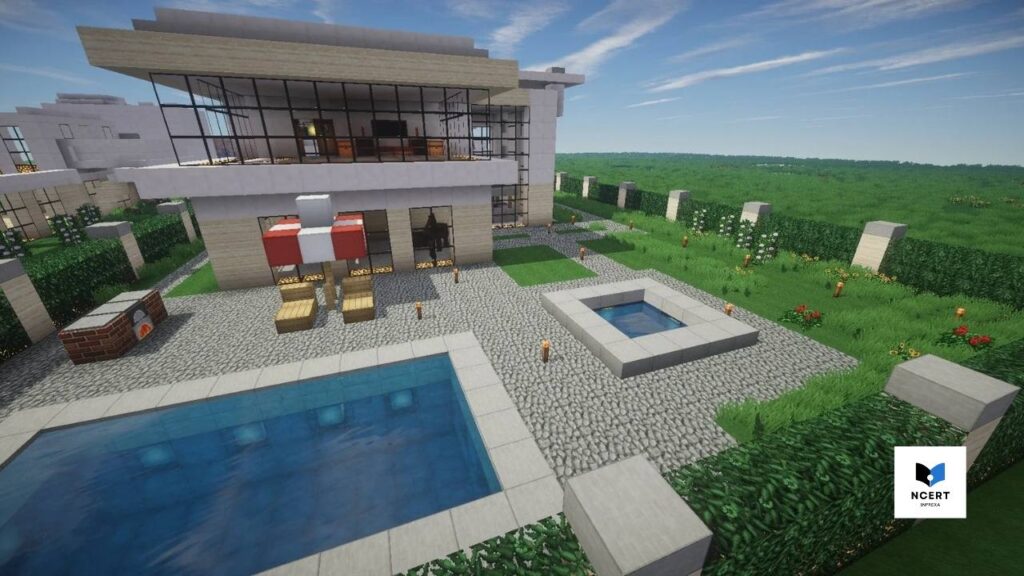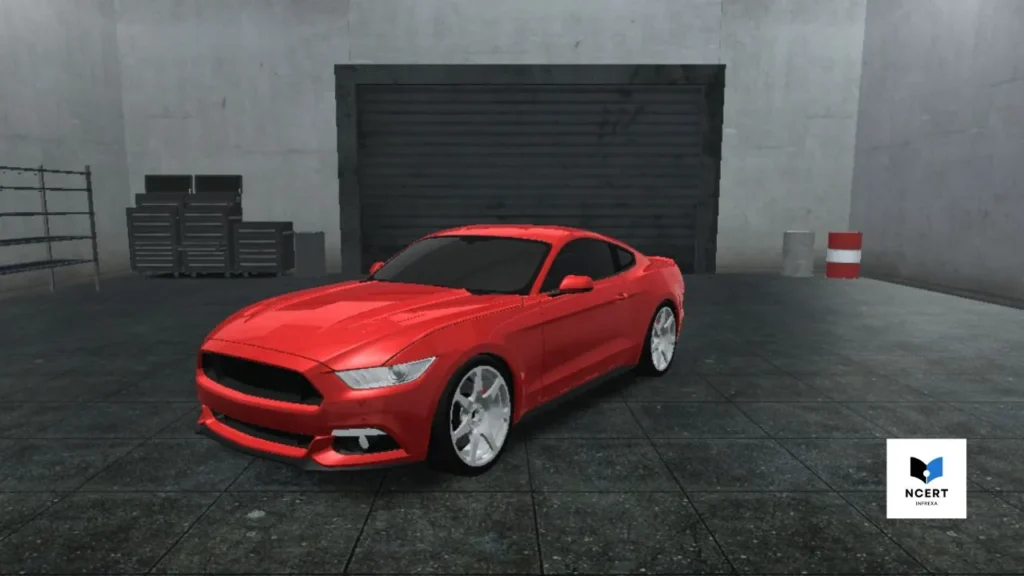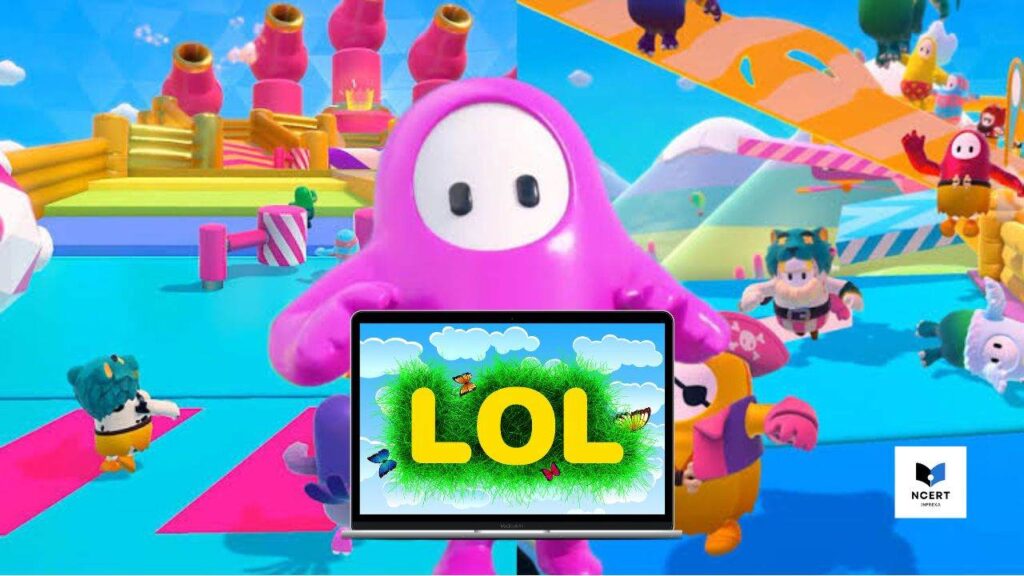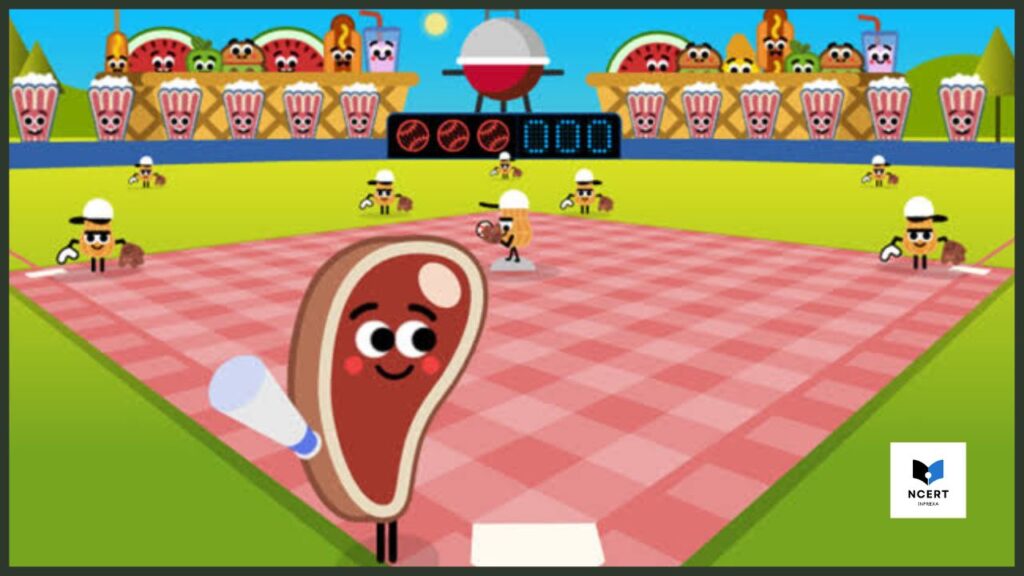Minecraft remains the best-selling video game of all time, a revolutionary 3D sandbox that grants players unparalleled freedom to explore, build, and survive in a vast, procedurally generated world. Its success is built on simple things like breaking and placing blocks, which allows for infinite creative complexity.
I’ve been playing since 2015, and what keeps me coming back is that no two worlds are ever the same; every new game is a unique adventure waiting to be shaped.
Originally created by Markus “Notch” Persson using the Java programming language, the game’s public journey began in May 2009. Following its full release in November 2011, Jens “Jeb” Bergensten took over as the lead developer. The game’s success led to its acquisition by Microsoft in 2014 for US $2.5 billion, and it is now developed by Mojang Studios.
As of October 2025, Minecraft has sold over 300 million copies globally and maintains more than 200 million monthly active users, reaffirming its dominance in the market and being one of the most widely played games worldwide.
Key Information
| Attribute | Detail |
|---|---|
| Name | Minecraft |
| Developer | Mojang Studios |
| Designers | Markus Persson, Jens Bergensten |
| Language | Java (Original Language) |
| Platforms | Windows, macOS, Linux (Java Edition); Windows, Consoles, Mobile (Bedrock Edition) |
| Official Website | minecraft.net |
| Ownership | Microsoft (via Mojang Studios) |
Gameplay: The Block-by-Block Experience
Minecraft is defined by its core loop: breaking and placing blocks. The entire world, from mountains and oceans to forests and caves, is composed of rough, 3D cubic blocks (and liquids) representing materials like dirt, stone, ore, and wood.
The game is played from a first-person perspective by default, though players can switch to a third-person view. The lack of required goals is a deliberate design choice, allowing players to define their own experience – whether it’s surviving a night, building a castle, or exploring far lands.
Character Customization (Skins)
Players begin with the default character models (Steve and Alex, among nine standard base models introduced in 2022); however, the total number of skins is virtually infinite through custom uploads. Players can upload custom skin files, and official Skin Packs (often DLC) are continuously released by Mojang Studios for the Bedrock Edition.
The Infinite World and Chunks
Minecraft’s world is procedurally generated using a random seed, ensuring every new world is unique. While vertical movement has limits, the horizontal plane is designed to be virtually infinite (though a hard technical boundary exists around 30 million blocks from the world center).
The game world is divided into chunks – manageable sections that load dynamically as players explore, ensuring performance remains stable. Worlds also contain distinct biomes, from jungles and deserts to icy plains and deep oceans.
The Day-Night Cycle and Mobs
A full day-night cycle lasts 20 real-time minutes. This cycle is critical for survival:
- Passive Mobs (e.g., cows, pigs, chickens) are harmless and provide food and materials.
- Hostile Mobs (e.g., zombies, skeletons, Creepers) spawn at night or in dark places like caves, posing a constant threat. Some, like Skeletons and Zombies, burn up under direct sunlight.
- Many hostile mobs have unique biome-specific variants, such as the Husk in desert biomes.
Game Modes: Defining Your Experience
Minecraft offers multiple game modes, each shaping the player’s experience in unique ways. The main modes are Survival, Creative, Adventure, Spectator, and Hardcore (Java Edition only). While difficulty settings (Peaceful, Easy, Normal, Hard) can be changed mid-game, the chosen game mode defines the overall gameplay style.
1. Survival Mode
Survival Mode represents the classic Minecraft experience, where players start with nothing and must collect resources, craft tools, build shelter, manage hunger, and fight hostile mobs to stay alive.
| Element | Description |
|---|---|
| Goal | To survive, establish a base, explore, and eventually defeat the bosses. |
| Inventory | Players have a limited inventory and nine hotbar slots for quick access. |
| Mechanics | Blocks require time to mine; damage is taken from hostile mobs and environmental sources (falling, lava, drowning). |
| Progression | Players are guided by an achievement system (Advancements in Java, Trophies/Achievements in Bedrock). |
Survival Multiplayer (SMP) allows friends to collaborate or compete on shared servers. Achievements include defeating bosses, exploring biomes, and mastering trade systems. Setting up a world for friends to play together is one of the best ways to experience Minecraft. Our guide to playing Minecraft online breaks down the best options.
Players often find that early farming and mining near spawn areas greatly improve long-term survival. Establishing food sources, like wheat or animal farms, is considered one of the smartest first-day strategies among experienced players.
2. Creative Mode
Creative Mode removes all survival constraints and is focused purely on building and design.
| Element | Description |
|---|---|
| Invincibility | Players are invincible, and health/hunger bars are hidden. |
| Resources | Players have unlimited access to every single block and item in the game via the inventory menu. |
| Mob Interaction | Mobs exist but will not attack the player. |
| Movement | Players can instantly fly (by double-tapping the jump key) and move freely through the world. |
| Action | Blocks are destroyed instantly with a single click. |
It has limitations like – opening a world in Creative mode disables achievements and leaderboards. Blocks broken by hand do not drop items.
My nephew Uday is one of the craziest lovers of Minecraft. He often uses the unlimited resources of Creative Mode to bring complex build ideas to life before attempting them in Survival.
3. Adventure Mode
Adventure Mode is specifically designed for player-created custom maps (like puzzle maps or narrative adventures) where creators want to preserve map integrity.
| Element | Description |
|---|---|
| Map Protection | Players cannot freely break or place blocks. Interaction is controlled using NBT tags: CanDestroy and CanPlaceOn (Java) or can_destroy and can_place_on (Bedrock). |
| Interaction | Players can operate buttons, levers, Redstone mechanisms, and trade with villagers. |
| Survival | Players still face environmental dangers and must manage their health and hunger. |
| Crafting | Remains available unless restricted by the map designer. |
It is frequently used on multiplayer servers and in Education Edition worlds for guided learning experiences. To be honest, some of the most fun I’ve had in Minecraft has been playing custom adventure maps with friends (Andrew, Michael, and Jessica from my college), solving puzzles we could never have built ourselves.
Adventure Mode is popular among server creators who want to preserve their designed worlds – especially role-play servers and downloadable quests.
4. Spectator Mode
Spectator Mode allows players to observe the world invisibly without interacting.
| Element | Description |
|---|---|
| Interaction | Spectators are invisible, invincible, and cannot interact with blocks or items. |
| Movement | Players can fly freely and pass through blocks and mobs. |
| Vision | Spectators can view through the eyes of mobs with unique visual filters and can toggle entity highlights (similar to the Glowing effect). |
In this mode, HUD Visibility is minimal (only chat and subtitles are visible). It is a non-interactive mode used for observation, broadcasting, and map debugging.
5. Hardcore Mode (Java Edition Exclusive)
Hardcore Mode is a difficult variant of survival mode – available only in Java Edition – and intended for seasoned players seeking maximum challenge.
| Element | Description |
|---|---|
| Difficulty | Locked permanently to the Hard difficulty setting. |
| Permadeath | No respawns – once you die, the world locks to Spectator mode, ending gameplay permanently. |
| Visuals | Health hearts appear with distinct dark-red marks to signal high risk. |
| World Rules | Cheats and bonus-chest options are disabled by default; Hardcore worlds cannot be reverted to normal Survival without external tools. |
In 2025, Multiplayer is still supported on Java servers; however, Realms (subscription worlds) do not support Hardcore mode.
Progression and End-Game Goals
The world is structured around three dimensions, each requiring specific conditions to access and serving as the structure for the game’s final progression.
The Overworld (The Main Dimension)
The familiar, primary world where players spawn. It hosts all the main biomes, resources, and the day-night cycle.
The Nether (Hell-like Dimension)
The Nether is accessed via player-constructed portals built from Obsidian. It is a dangerous, hell-like dimension with unique mobs (like Hoglins and Ghasts) and resources (like Netherite ore and Soul Sand). It also serves as a crucial high-speed travel transport network: one block traveled in the Nether equals eight blocks in the Overworld, allowing for rapid long-distance travel. The optional boss, The Wither, is summoned using materials primarily found here.
The End (The Final Dimension)
The End is a desolate, void-filled dimension of floating islands. It is the final destination for players who wish to “complete” the game. The main island is home to the final boss: the Ender Dragon. Defeating the Dragon triggers the game’s end credits (which display a poem by Julian Gough) and opens an exit portal, allowing the player to return to the Overworld and continue playing indefinitely. Players can also summon the second optional boss, The Wither, using a combination of Soul Sand and three Wither Skeleton Skulls (items primarily acquired in the Nether).
The first time I defeated the Ender Dragon with friends on a server was a truly epic gaming moment. It’s a satisfying culmination of all your grinding and preparation.
Redstone Engineering
Redstone is Minecraft’s fundamental system for complex mechanics and automation, often described as its form of in-game electrical engineering or computer science. It allows players to construct automated farms, traps, and complex logic systems.
Components of a Redstone Circuit
- Redstone Dust: Transmits power up to 15 blocks from its source. The signal decays over distance.
- Power Sources: Components that actively generate a signal. These include Redstone Blocks (permanent), Levers, and momentary switches like Buttons and Pressure Plates.
- Redstone Repeater: Serves two primary functions:
- Extends Signal: Boosts a weak, decaying signal back to full strength (15 blocks).
- Diode: Acts as a one-way gate, preventing signals from flowing backward. It also introduces a customizable delay.
- Redstone Comparator: A specialized component used to:
- Read Inventory: Measures the fullness of blocks with inventories (chests, dispensers).
- Compare Signals: Compares the strength of two Redstone signals, essential for item sorting.
- Mechanical Components: Blocks activated by Redstone, such as Pistons (push/pull blocks) and Dispensers/Droppers (output items).
Logic Gates and Automation
By combining Redstone Torches and wiring, players can create logic gates (e.g., AND, OR, NOT). These gates allow circuits to make decisions based on specific input combinations, forming the basis of simple calculators and complex, multi-input security systems. This engineering enables essential automation, such as:
- Automated Farms: Harvesting resources like crops, wood, or mobs without manual intervention.
- Item Sorters: Using Comparators and Hoppers to automatically distribute collected loot into categorized storage chests.
- Timed Circuits: Systems that operate on a precise loop or delay, such as clock circuits or timed traps.
Experienced players often experiment with Redstone to create fully automated sorting systems or hidden door mechanisms. Redstone behaves slightly differently between Java and Bedrock, making cross-edition engineering a unique challenge.
Edition Differences: Java vs. Bedrock
The existence of two main, actively developed versions of the game – Java Edition and Bedrock Edition (built on C++) – leads to critical differences in performance, multiplayer features, and even core mechanics.
| Feature | Java Edition | Bedrock Edition |
|---|---|---|
| Codebase | Java | C++ |
| Cross-Play | Limited to other Java users (PC/Mac/Linux). | Full Cross-Platform Play across consoles, mobile, and Windows 10/11. |
| Customization | Extensive, free, community-driven Mods using external loaders (Forge, Fabric). | Limited to official Minecraft Marketplace purchases (Add-Ons, Texture Packs). |
| Graphics | Relies on third-party shader packs for high-end visuals. | Utilizes the Render Dragon graphics engine and supports marketplace-approved ray tracing. |
| Hardcore Mode | Exclusive feature. | Not available as a built-in mode. |
Players switching between editions often notice differences in Redstone behavior – pistons and comparators react with subtle timing variations. These small distinctions make Java ideal for technical builds, while Bedrock runs more smoothly on modern consoles.
I noticed that Bedrock Edition loads terrain faster on my mid-range laptop, but Redstone circuits perform more reliably on Java.
The Critical Redstone Difference
The most significant distinction for advanced players is the behavior of Redstone:
- Java Edition Redstone: Features Quasi-Connectivity (QC), a legacy bug that acts as an undocumented feature. QC allows certain blocks (like Pistons) to be powered by a Redstone signal up to two blocks above them, even without a direct visual connection. This is leveraged for advanced, compact contraptions.
- Bedrock Edition Redstone: Lacks Quasi-Connectivity. Its Redstone is more intuitive and adheres strictly to direct line-of-sight powering. While simpler to understand, it prevents many of the complex, compact designs possible in Java.
Customization and Community
Minecraft’s long-term success is largely sustained by its robust modding and creative community – a global network of fans, developers, and educators who continuously expand the game beyond its vanilla experience. Over the years, Mojang has supported this creativity by introducing official APIs and tools that simplify community-driven development.
Mods (Modifications)
Mods, short for modification, are custom changes to the Minecraft codebase that add new gameplay elements, including blocks, items, mobs, dimensions, and automation systems. These range from simple features like minimaps and durability counters to expansive overhauls that introduce entire new worlds and mechanics.
Modern frameworks such as Forge, Fabric, and Quilt are now the most widely used for loading and managing mods. Mojang has also introduced official modding APIs to encourage safer, more stable community development.
Resource Packs
Resource Packs alter the visual and audio aspects of the game – textures, sounds, and models – without modifying gameplay logic. Players can switch between packs to give Minecraft a completely new artistic style, from realistic high-definition textures to retro or themed visuals.
Custom Maps
Players and creators design custom maps that include hand-crafted environments, storylines, and puzzles. These maps often employ Adventure Mode, ensuring players follow preset rules that preserve the map’s design. Popular genres include parkour challenges, puzzle quests, and role-playing adventures.
Over the years, Mojang has embraced modding by integrating resource pack support directly into vanilla Minecraft. Players can now toggle community content seamlessly through the main menu.
The Ongoing Modding Ecosystem (2025)
As of 2025, platforms like CurseForge, Modrinth, and Planet Minecraft host millions of community creations. This vast ecosystem ensures that Minecraft remains infinitely replayable and ever-evolving, supported by both Mojang’s official tools and a passionate global fan base.
Minecraft Spin-Off Games
Minecraft remains one of the most popular games globally. Here are five major Minecraft-related titles that have shaped the franchise’s expansion.
1. Minecraft Dungeons
Released on May 26, 2020, Minecraft Dungeons is an action-adventure game developed by Mojang Studios and Double Eleven. It supports up to four players in local or online co-op.
Players explore procedurally generated levels, battling mobs and collecting loot in a class-free system that emphasizes gear customization. Unique weapons and artifacts allow varied playstyles, making it easy for both casual and competitive players to enjoy.
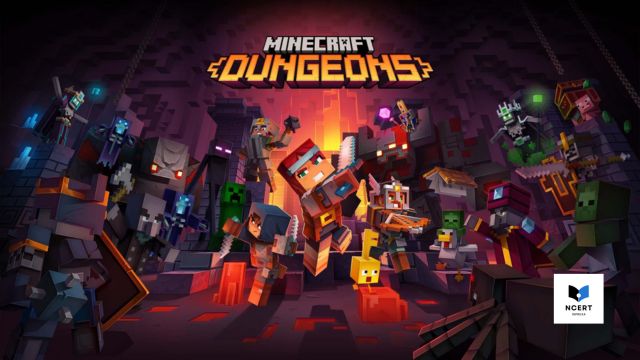
While it shares Minecraft’s blocky art style, Dungeons focuses entirely on combat and exploration, omitting building and crafting.
Support status (2025): The game received its final major content update in September 2023, and active development has officially ended, though servers and cross-platform play remain functional.
2. Minecraft Legends
Minecraft Legends is a real-time action-strategy game released on April 18, 2023, developed by Mojang Studios and Blackbird Interactive, and published by Xbox Game Studios.
It combines strategic troop management with direct player combat, all viewed from a third-person perspective. The game includes both co-operative and competitive multiplayer modes.
It is available on platforms: Nintendo Switch, PlayStation 4 & 5, Windows PC, Xbox One, and Xbox Series X/S.
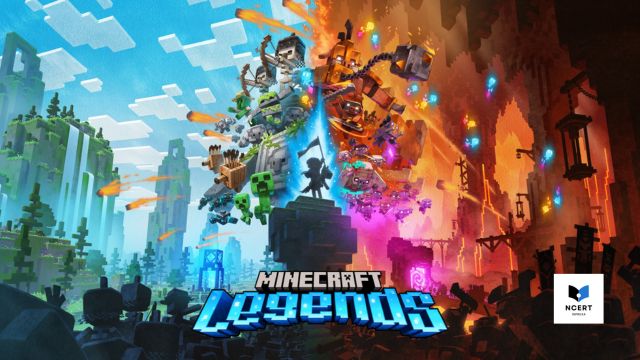
Current status (2025): Legends continues to receive seasonal balance updates and community events, but no major expansion has been announced since mid-2024.
3. Minecraft: Education Edition
Minecraft: Education Edition is a game-based learning platform used by schools worldwide. It adapts the Minecraft environment into a safe, collaborative virtual classroom, where students can complete projects in science, history, coding, and more.
Teachers use built-in classroom tools such as NPC guides, chalkboards, and assessment modes to enhance learning outcomes.
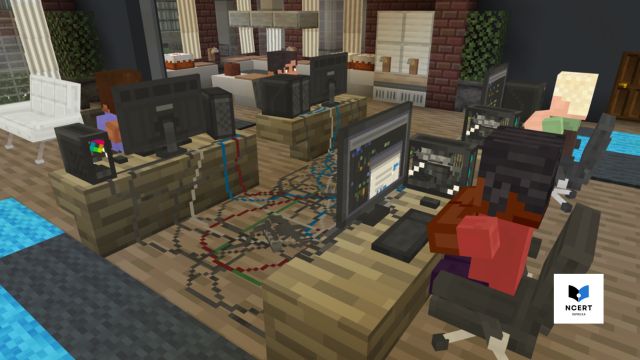
Platforms (2025): Available on Windows 10/11, macOS, iPad, Chromebook, and Android tablets. Licensing is offered through Microsoft 365 Education or direct per-user licensing for schools and districts.
4. Minecraft: Story Mode (Discontinued)
Minecraft: Story Mode was an episodic point-and-click adventure game developed by Telltale Games and based on the Minecraft universe.
The original season ran from October 2015 to March 2016, followed by three downloadable episodes and a second season in 2017.
The story follows a customizable hero named Jesse, who embarks on a quest to save the Overworld from the Wither Storm. Gameplay focused on narrative choices, puzzles, and light combat.
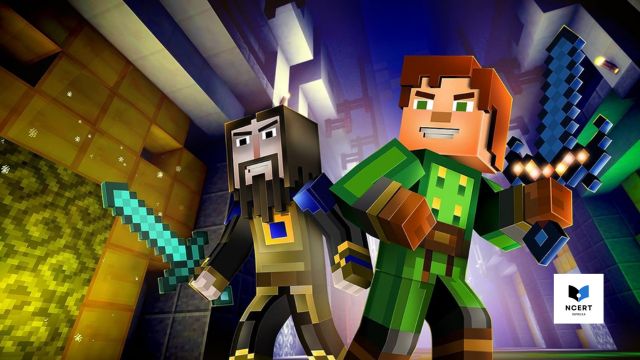
Status: Following Telltale Games’ closure in 2018, Story Mode was discontinued on June 25, 2019. The Netflix interactive version was also removed in December 2022.
5. Minecraft Earth (Discontinued)
Minecraft Earth was an augmented-reality (AR) mobile game developed by Mojang Studios and published by Xbox Game Studios.
Players used their smartphone cameras to explore the real world, collect virtual resources, and collaborate on shared builds through AR. The game featured “Adventures,” short AR encounters involving puzzles or combat.
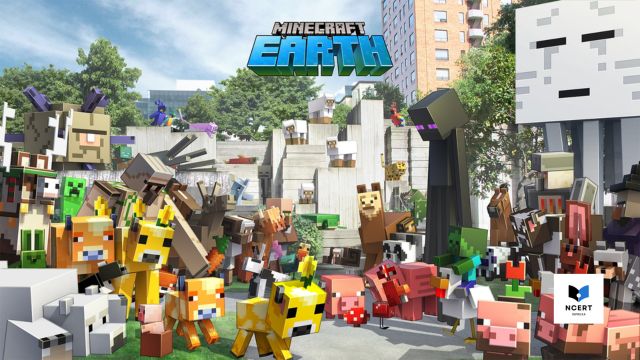
Status: Due to the impact of the COVID-19 pandemic, Mojang shut down servers on June 30, 2021. Gameplay is no longer accessible.
Player Experience in 2025
Having personally tested both Java and Bedrock editions in 2025, the gameplay feels more optimized than ever. Java runs smoother on modern GPUs, while Bedrock offers flawless multiplayer on consoles and mobile. The improved lighting engine, biome transitions, and native mod support for Fabric 0.15+ make both editions stand out as the best-performing versions to date.
If you’re starting fresh in 2025, begin with Bedrock for accessibility and cross-play, or choose Java Edition for limitless customization.
